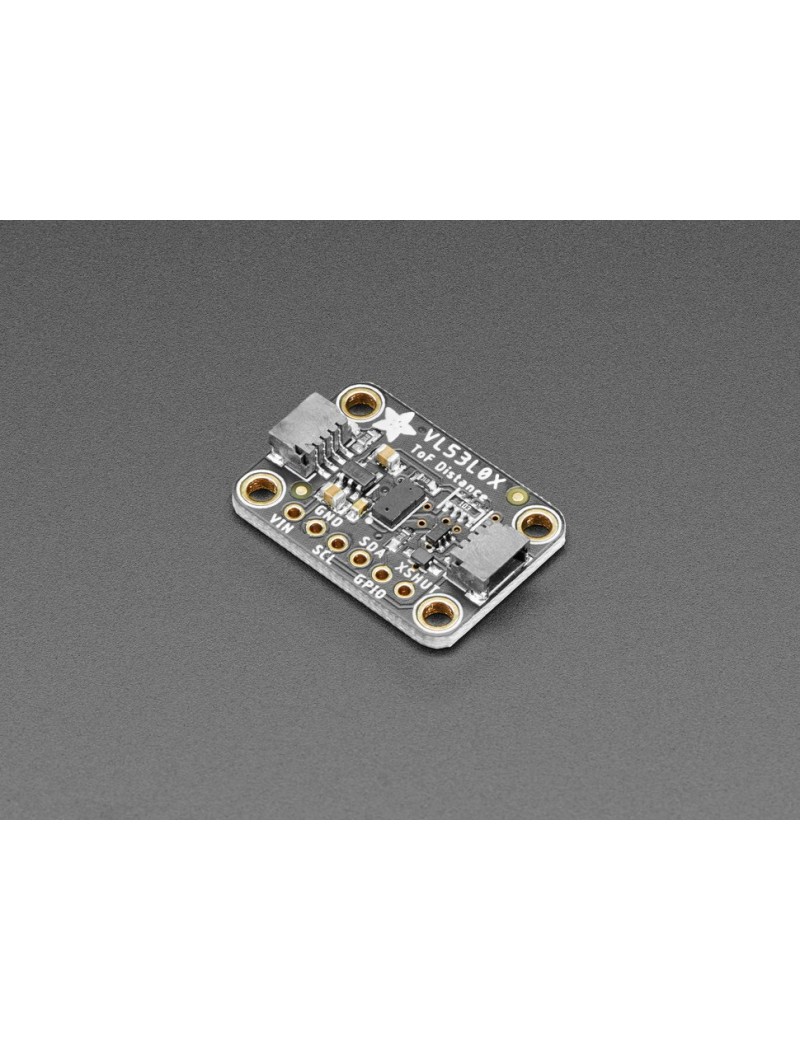

No products in the cart.


The VL53L0X is a Time of Flight distance sensor like no other you've used! The sensor contains a very tiny invisible laser source, and a matching sensor. The VL53L0X can detect the "time of flight", or how long the light has taken to bounce back to the sensor. Since it uses a very narrow light source, it is good for determining distance of only the surface directly in front of it. Unlike sonars that bounce ultrasonic waves, the 'cone' of sensing is very narrow. Unlike IR distance sensors that try to measure the amount of light bounced, the VL53L0x is much more precise and doesn't have linearity problems or 'double imaging' where you can't tell if an object is very far or very close.
This is the 'big sister' of the VL6180X ToF sensor, and can handle about 50mm to 1200mm of range distance. If you need a smaller/closer range, check out the VL6180X which can measure 5mm to 200mm and also contains a light sensor.
The sensor is small and easy to use in any robotics or interactive project. Since it needs 2.8V power and logic we put the little fellow on a breakout board with a regulator and level shifting. You can use it with any 3-5V power or logic microcontroller with no worries. Works great with the 3.3V logic level of a Feather or Raspberry Pi, or the 5v level of a Metro 328 or Arduino Uno, this breakout is ready to work with most common microcontrollers or SBCs. and since it speaks I2C, you can easily connect it up with two data wires plus power and ground.
As if that weren't enough, we've also added SparkFun qwiic compatible STEMMA QT connectors for the I2C bus so you don't even need to solder. Just wire up to your favorite micro with a plug-and-play cable to get 6-DoF data ASAP. For a no-solder experience, just wire up to your favorite micro, like the STM32F405 Feather using a STEMMA QT adapter cable. The Stemma QT connectors also mean the VL53L0X can be used with our various associated accessories. QT Cable is not included, but we have a variety in the shop
Communicating to the sensor is done over I2C with an API written by ST, so its not too hard to port it to your favorite microcontroller. We've written a wrapper library for Arduino so you can use it with any of your Arduino-compatible boards.
Check out our tutorial for code, schematics, diagrams and more!
It's easy to use the VL53L0X sensor with Python and CircuitPython, and the Adafruit CircuitPython VL53L0X module. This module allows you to easily write Python code that reads the range from the sensor.
You can use this sensor with any CircuitPython microcontroller board or with a computer that has GPIO and Python thanks to Adafruit_Blinka, our CircuitPython-for-Python compatibility library.
Schematics, Fritzing object, diagrams, interface code and more in the tutorial!
Revision History:
Sensing capabilities:
The sensor can measure approximately 30mm to 1.2 meter in default mode.

In 'long range' mode you can detect as far as 1.5 to 2 meters on a nice white reflective surface.

Depending on ambient lighting and distance, you'll get 3 to 12% ranging accuracy - better lighting and shiny surfaces will give you best results. Some experimentation will be necessary since if the object absorbs the laser light you won't get good readings.


Product Dimensions: 21.0mm x 18.0mm x 2.8mm / 0.8" x 0.7" x 0.1"
Product Weight: 1.3g / 0.0oz

